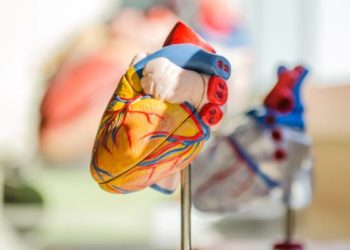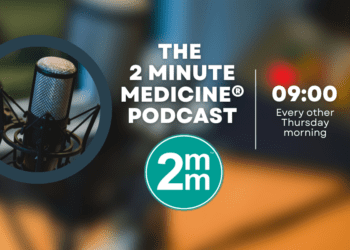Bystander-initiated CPR associated with improved survival
1. In a study conducted using data from the Swedish Cardiac Arrest Registry, initiating cardiopulmonary resuscitation prior to the arrival of emergency medical services was associated with significantly higher 30-day survival.
2. This study also demonstrated that shorter time to starting CPR after collapse was linked with improved 30-day survival compared to delaying CPR.
Evidence Rating Level: 2 (Good)
Study Rundown: A large number of cardiac arrests occur outside of hospitals. Initiating treatment as early as possible has been shown to improve outcomes in cardiac arrest, and in out-of-hospital arrests, cardiopulmonary resuscitation (CPR) is often performed by bystanders. Recent debate within the medical community has questioned the value of bystander CPR, as there is very poor evidence examining the link between bystander-initiated CPR and cardiac arrest outcomes. The purpose of this trial was to determine whether CPR started prior to the arrival of emergency medical services (EMS) was linked with improved 30-day survival in individuals who experienced an out-of-hospital cardiac arrest using data collected in the Swedish Cardiac Arrest Registry. This study demonstrated that initiating CPR prior to the arrival of EMS was linked with significantly higher 30-day survival when compared with starting CPR after the arrival of EMS. Of note, initiating CPR sooner after collapse was associated with significantly better 30-day survival compared to when CPR was initiated later. Limitations of this study include relying on bystander reporting to determine timing of certain events and that approximately one-quarter of arrests are not reported prospectively to the registry. Nevertheless, this large study with its focus on bystander-witnessed arrests and strong statistical analyses adds to the body of evidence suggesting that early initiation of CPR improves survival in out-of-hospital cardiac arrests.
Click to read the study, published today in NEJM
Click to read an accompanying editorial in NEJM
Relevant Reading: Association of neighborhood characteristics with bystander-initiated CPR
In-Depth [retrospective cohort]: All cases of EMS-treated and bystander-witnessed out-of-hospital cardiac arrests were identified in the Swedish Cardiac Arrest Registry from January 1990 to December 2011 and included in this study, while cases that were not witnessed or only witnessed by EMS were excluded. For each cardiac arrest, data regarding the timing of events (e.g., call to the dispatch center, arrival of EMS, start of CPR, defibrillation) were available in the registry, and were based on accounts of events provided by witnesses, first responders, and EMS staff.
In all, 61 781 patients experienced an out-of-hospital arrest during the study time frame. Of these, 30 381 patients had a bystander-witnessed arrest, with 15 512 receiving CPR prior to EMS arriving and 14 869 receiving CPR after EMS arrived. Patients receiving CPR after the arrival of EMS were significantly older (median 74 vs. 69 years, p<0.001), more often female (30.2 vs. 26.8%, p<0.001), more likely to have collapsed at home (73.2 vs. 55.5%, p<0.001), and were less likely to have ventricular fibrillation or tachycardia as their initial rhythm (30.7 vs. 41.3%, p<0.001). In patients who received CPR prior to the arrival of EMS, 30-day survival was 10.5% compared with 4.0% in those who did not (p<0.001). In all subgroups studied, shorter time to initiating CPR after collapse was associated with significant improvements in 30-day survival rates.
Image: PD
©2015 2 Minute Medicine, Inc. All rights reserved. No works may be reproduced without expressed written consent from 2 Minute Medicine, Inc. Inquire about licensing here. No article should be construed as medical advice and is not intended as such by the authors or by 2 Minute Medicine, Inc.







